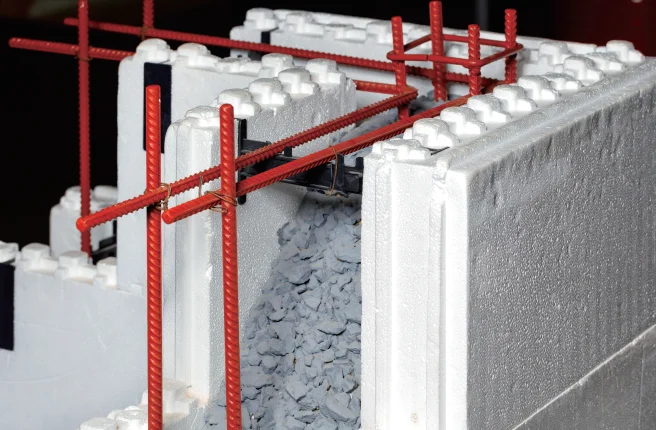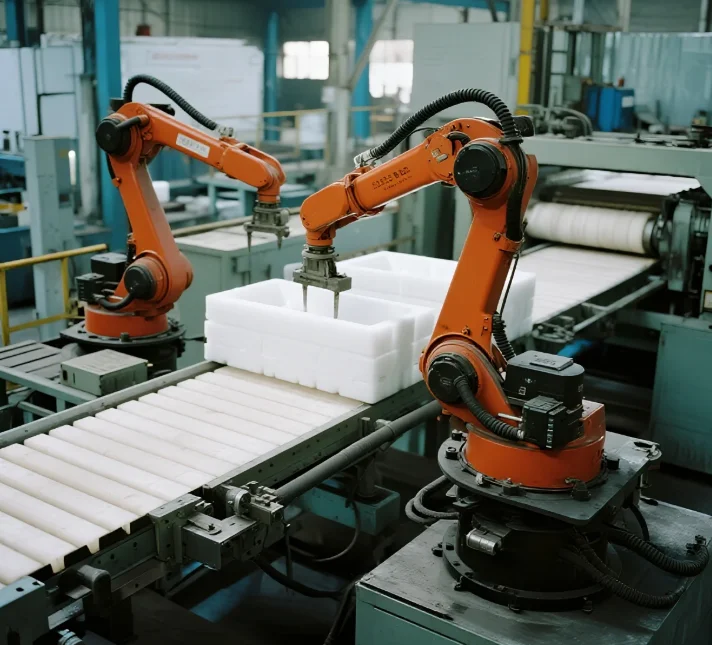
What Makes Styrofoam Beads Suitable for Use in Concrete?
When you mix styrofoam beads into concrete, their special features stand out. These small, super-light balls, made from expanded polystyrene (EPS), have unique physical and chemical traits. These qualities make them perfect for adjusting cement-based mixtures to work better.
Physical and Chemical Properties Affect Concrete Performance
Styrofoam beads stay calm and don’t break down. They also push water away. This means they stay steady inside the concrete mix. They don’t mess with how cement sets and hardens. Their round shape and light weight—between 10–30 kg/m³—really cut down the concrete’s total heaviness.
EPS Integrates Well With Cement-Based Materials
EPS beads don’t soak up water easily. They also find it hard to stick to cement paste. But smart coatings or additives can make them get along better. Covering beads with sticky agents or using special bonding materials stops them from separating during mixing. This also makes them hold tight in the hardened concrete. These tricks help EPS blend nicely and boost the mix’s quality.
EPS Impacts Concrete Density and Porosity
Switching heavy gravel for styrofoam beads lowers the concrete’s weight a lot. You can get densities as low as 500–1000 kg/m³, based on the mix plan. But this change makes the concrete more holey. These holes affect how well it insulates and how strong it is. The light beads make a looser structure. So, you need to plan carefully to balance everything.
This airy setup leads us to explore how EPS changes the way concrete deals with heat, a big plus for building projects.
Why Does Lightweight Concrete Offer Better Thermal Insulation?
Adding styrofoam beads changes how concrete handles warmth. This section looks at how heat moves in regular concrete compared to EPS-mixed concrete.
Heat Transfer Mechanisms Differ in EPS-Modified Concrete
Regular concrete lets heat pass through quickly because of its heavy, stone-like frame. EPS beads slow this down with their low heat conductivity (~0.033 W/m·K). They act like tiny walls, breaking up the heat’s path. This builds a cozy shield inside the concrete, slowing down heat movement.
Trapped Air in EPS Beads Boosts Thermal Resistance
Inside EPS beads, air gets trapped in lots of little pockets. These pockets block heat from moving, like a warm quilt in the concrete. When spread evenly, these air-filled holes stop heat from traveling easily. They keep heat bridges from forming in the mix. This makes the insulation much better.
Does Adding Styrofoam Compromise Structural Integrity?
Mixing in styrofoam beads improves insulation but changes strength. Finding a balance is key for real-world uses.
EPS Reduces Compressive Strength
EPS beads aren’t as stiff as regular gravel. They don’t stick to cement paste as well. This lowers the concrete’s strength. You might get strength between 2–15 MPa, depending on how many beads you use and how they’re treated. This makes EPS-concrete less ideal for heavy structures. But it works great for non-heavy walls or insulating layers where strength needs are low.
EPS-Concrete Durability in Freeze-Thaw Cycles
EPS-concrete handles freeze-thaw cycles pretty well. Its high air content and bendy beads soak up stress from freezing water. But lasting strength depends on the mix’s quality. Keeping the water-cement ratio just right is super important for long-term toughness.
EPS Influences Moisture Behavior
Styrofoam beads don’t like water because they’re water-repelling. This cuts down on water seeping into the concrete. But if the beads don’t stick well, the concrete can let more water through. Using good sealing or thicker surface layers helps stop this. These layers block water but let vapor escape. This makes the concrete great for walls that need to “breathe”.
With strength and heat-blocking covered, the next step is figuring out the best mix design to make EPS-concrete shine.
Environmental and Financial Benefits of Styrofoam-Based Concretes
EPS-concrete packs a punch with both eco-friendly and money-saving perks that stretch beyond just construction. Using recycled EPS beads, when cleaned and sized properly, works just as well as fresh ones, keeping junk out of landfills and lining up with green building vibes. Sure, the upfront cost might sting a bit due to special additives or trickier mixing, but it pays off big time. It’s awesome insulation slashes heating and cooling bills, and the lightweight nature cuts down on transport and handling costs—huge for prefab projects where moving stuff gets pricey.

For high-quality flame-retardant EPS made for construction, try Flame Retardant Grade – FHE-N-HBCD. It meets tough safety rules while keeping great heat-blocking power. This product was developed by HUASHENG, a high-tech enterprise specializing in the research and development, production, and sales of expandable polystyrene (EPS) foam.
What’s Next Research?
Research on foam-based concretes, especially those with Expanded Polystyrene, is moving fast with cool new ideas. Folks are mixing in stuff like basalt fibers with EPS beads to make the concrete stronger without weighing it down. This works great for places that get earthquakes, where materials gotta flex without cracking. Meanwhile, fancy additives like nanoclays, aerogels, and graphene oxide are being tested to cut down heat transfer even more. They don’t mess up the strength too much, and early results look pretty solid, though it’s still early days. On top of that, ASTM and ISO teams are hammering out specific tests for these super-light mixes, focusing on strength and how they hold up. Clear rules like these will make EPS-concrete a go-to choice worldwide, fitting all sorts of building codes no problem.
HUASHENG is driving a global material revolution with a single grain of polystyrene. Through hardcore technology and ecological responsibility, it has inscribed a new coordinate of China’s green intelligent manufacturing on the world’s material stage. If you have any needs or questions, please contact HUASHENG.
FAQ
Q: Will using styrofoam under concrete affect its load-bearing capacity?
A: Yes, it reduces strength compared to regular mixes. But it works for non-heavy parts like insulating slabs or wall cores. Adding reinforcement keeps it strong enough.
Q: Can I use recycled styrofoam beads instead of virgin ones?
A: For sure, recycled beads are great if they’re clean and evenly sized. They perform like new beads and help the environment.
Q: Is flame retardancy an issue when using polystyrene-based fillers?
A: Not with special grades like FHE-N-HBCD. These meet tough fire safety rules worldwide, keeping things safe without losing heat-blocking power.






